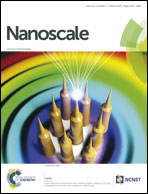Chemistry and structure of homoepitaxial SrTiO3 films and their influence on oxide-heterostructure interfaces
Abstract
The properties of single-crystal SrTiO3 substrates and homoepitaxial SrTiO3 films grown by pulsed laser deposition have been compared, in order to understand the loss of interfacial conductivity when more than a critical thickness of nominally homoepitaxial SrTiO3 is inserted between a LaAlO3 film and a SrTiO3 substrate. In particular, the chemical composition and the structure of homoepitaxial SrTiO3 investigated by low-energy ion-scattering and surface X-ray diffraction show that for insulating heterointerfaces, a Sr-excess is present between the LaAlO3 and homoepitaxial SrTiO3. Furthermore, an increase in the out-of-plane lattice constant is observed in LaAlO3, indicating that the conductivity both with and without insertion of the SrTiO3 thin film originates from a Zener breakdown associated with the polar catastrophe. When more than a critical thickness of homoepitaxial SrTiO3 is inserted between LaAlO3 and SrTiO3, the electrons transferred by the electronic reconstruction are trapped by the formation of a Sr-rich secondary phase and Sr-vacancies. The migration of Sr towards the surface of homoepitaxial SrTiO3 and accompanying loss of interfacial conductivity can be delayed by reducing the Sr-content in the PLD target.


 Please wait while we load your content...
Please wait while we load your content...